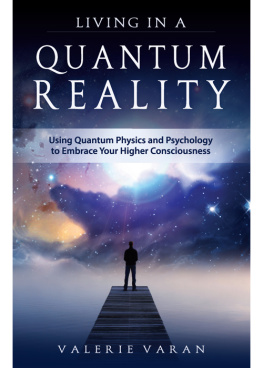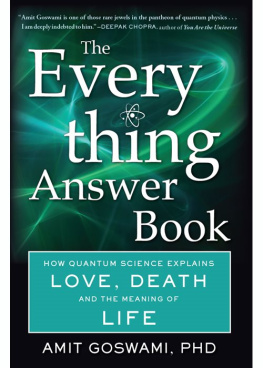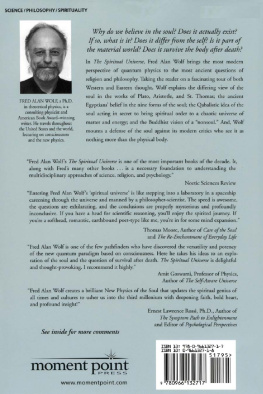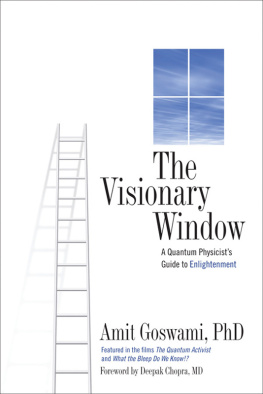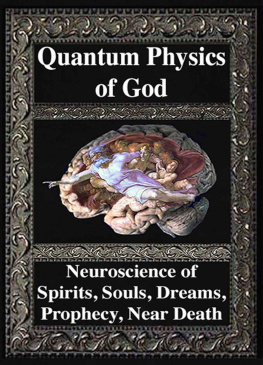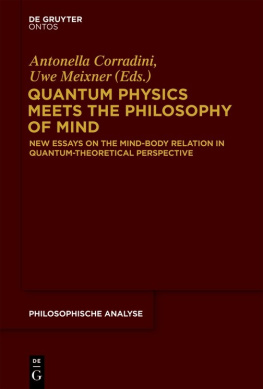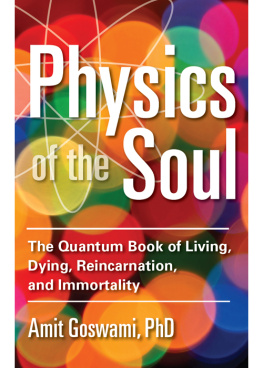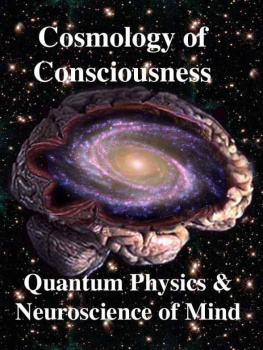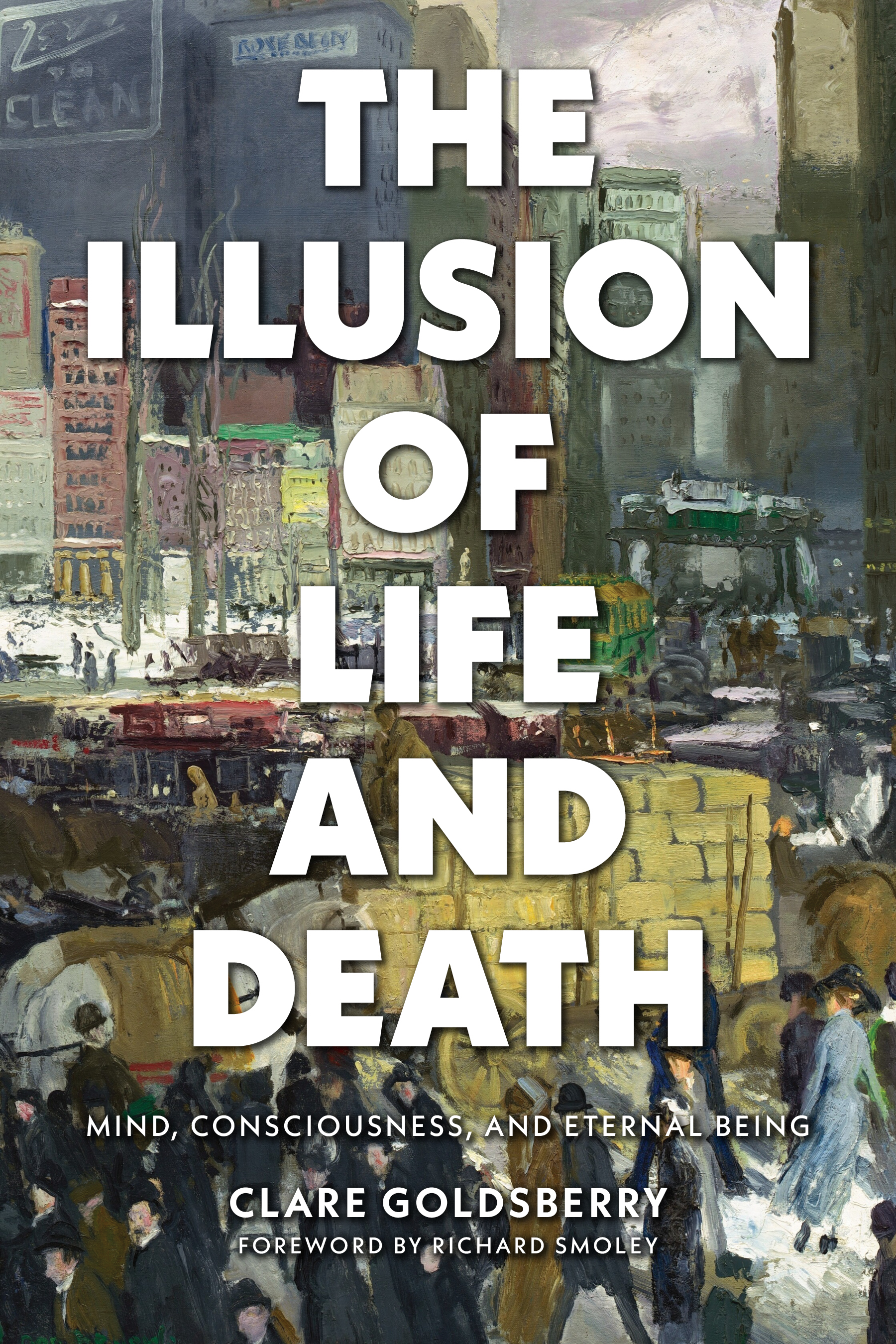

The Illusion of Life and Death: Mind, Consciousness, and Eternal Being 2021 by Clare Goldsberry
Foreword 2021 by Richard Smoley
All rights reserved. No part of this book may be used or reproduced in any manner without the consent of publisher except in critical articles or reviews. Contact the publisher for information.
Paperback ISBN 978-1-948626-47-7
eBook ISBN 978-1-948626-48-4
Library of Congress Cataloging-in-Publication Data
Names: Goldsberry, Clare, 1947- author.
Title: The illusion of life and death : mind, consciousness, and eternal
being / Clare Goldsberry ; foreword by Richard Smoley.
Description: Rhinebeck, New York : Monkfish Book Publishing Company, [2021]
| Includes bibliographical references.
Identifiers: LCCN 2021025241 (print) | LCCN 2021025242 (ebook) | ISBN
9781948626477 (paperback) | ISBN 9781948626484 (ebook)
Subjects: LCSH: Life. | Death. | Life--Religious aspects. |
Death--Religious aspects.
Classification: LCC BD431 .G525 2021 (print) | LCC BD431 (ebook) | DDC
128--dc23
LC record available at https://lccn.loc.gov/2021025241
LC ebook record available at https://lccn.loc.gov/2021025242
Book and cover design by Colin Rolfe
Cover painting: New York (1911) by George Bellows
S cience and the Akashic Field by Ervin Laszlo published by Inner Traditions International and Bear & Company, 2007. All rights reserved.
http://www.Innertraditions.com Reprinted with permission of publisher.
Monkfish Book Publishing Company
22 East Market Street, Suite 304
Rhinebeck, NY 12572
(845) 876-4861
monkfishpublishing.com
To Brent W. Deupree, my soulmate,
who taught me how to live
and, more importantly, how to die
contents
Part 1: What is Life?
Part 2: Illness, Old Age, and Death
Part 3: Looking Deeper into Death
Part 4: What Happens After Death
Foreword
by Richard Smoley
There is, to my knowledge, no book entitled The Joy of Dying , but many come close. There are The Joy in Dying by T Sky, Joy in the Journey by Sharol Hayner, and Steve Hayner and Living While Dying by Donna Tarrant.
How can these authors speak with authority? Unless you accept the doctrine of reincarnation, no one has actually experienced death. Even if we have lived and died in past lives, we generally do not remember them. The near-death experience, as its name indicates, may be close to death but is not death itself.
This fact leads me to wonder about the expertise of these authors. After all, if I buy a book called The Joy of Plumbing , I expect it to be written by someone who has a great deal of experience with wrenches and pipes. Some certainly see death and its effects more often and immediately than mosthospice nurses, undertakersbut ultimately they are like the rest of us: they have not died themselves.
Such titles indicate a glibness about death in modern American society, which masks a profound discomfort with this most ultimate of subjects. Do people fear death? At any rate, they fear thinking about it. This is evident in coverage of every major disaster: sudden and unexpected loss of life is treated as the worst thing that can possibly happen.
Past generations faced death very differently. In the first place, it was in plain view. People died at home, and they were often waked at home as well. Many of the nineteenth-century brownstone houses of Brooklyn, New York, have niches in their narrow stairwells called coffin rests, which enabled the resident family to fit a coffin through as they moved it down the stairs. In the same era, it was common to photograph the deceased in an open casket along with the survivors, often in their living room. Today most people would regard this as a gross violation of taste.
Much of the immediacy of death in earlier times had to do with poverty. A new widow might barely have been able to afford even the expense of a coffin and a meal for the guests and often had no clear idea where the next weeks money would come from, so there was no question of shipping the body off to a costly funeral director. But there was also the presence of religionand because I am talking about America, this was Christianity, the nations dominant faith.
From its inception, Christianity has always been intimately preoccupied with death. In Doctor Zhivago, Boris Pasternak writes, Art has two constant, two unending concerns: it always meditates on death and thus always creates life. All great, genuine art resembles and continues the Revelation of St. John.
Christian art has indeed meditated constantly on death. Sometimes these images can be gruesome. Anyone who has visited medieval cathedrals in Europe will have seen the sepulchers of noblemen and bishops. Usually they are in full regaliaarmor or ecclesiastical vestments. One exception was Paul Bush, the first bishop of Bristol, England, in the sixteenth century. His sepulcher, on display in Bristol Cathedral, has a stone effigy of him portrayed as a half-rotted corpse. Evidently Bishop Bush wanted to drive home the message of the mortality of the flesh particularly vividly.
Like many such representations, a gravestone carving found in Bostons Colonial cemetery sends a double message. A skull and crossbones points to the bodys demise. But the skull also has a pair of wings, alluding to the invisible soul that flies off to the afterlife. An image like this one signifies that death, though an end, is not the end; not only is there a reality beyond, but that reality, being eternal, is far more significant than the few decades of an uncertain and often painful life on earth. As such, awareness of death must be kept ever-present in the foreground.

This idea is still alive in the monastic tradition. As Clare Goldsberry notes in this book, the Benedictine monk David Steindl-Rast writes that at the monastery, monks are counseled (or challenged) to have death at all times before our eyes.
Traditional Catholicism speaks of the quattuor novissima , the Four Last Things: Death, Judgment, Heaven, and Hell. These stages of the end of life and the afterlife were brought vividly before believers eyes, and a vast body of literatureand practicedealt with preparation for these last things. In The Rule and Exercise of Holy Denying , the seventeenth-century English divine Jeremy Taylor writes: He that will die well and happily must dress his Soul by a diligent and frequent scrutiny: he must perfectly understand and watch the state of his Soul; he must set his house in order before he is fit to die. And for this there is great reason, and great necessity.
The practice of the buen morir , the good death, a time of penitence and contemplation before an anticipated death, was aimed at putting the house of the soul in order. This may have been done by the most powerful monarch of the sixteenth century, the Holy Roman Emperor Charles V. In 1556, he turned over his holdings in Austria and Germany to one son; in 1558, shortly before his death, he handed the throne of Spain to another. Although matters of state no doubt played a part, it was widely believed that his abdication was motivated by his desire for the buen morir . Ignatius Loyola, founder of the Jesuit order, writes, The emperor gave a rare example to his successors...in so doing, he proved himself to be a true Christian prince...may the Lord in all His goodness now grant the emperor freedom.


